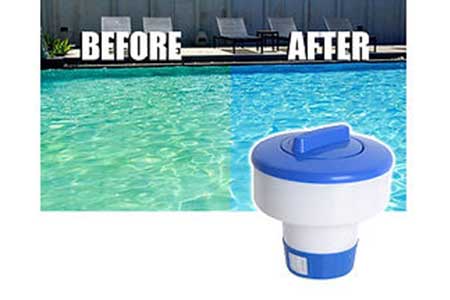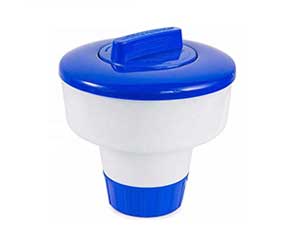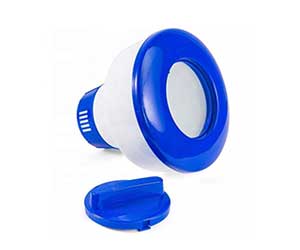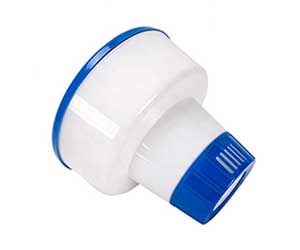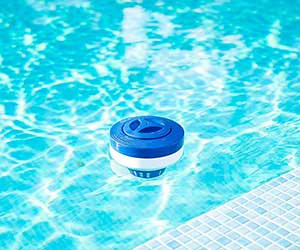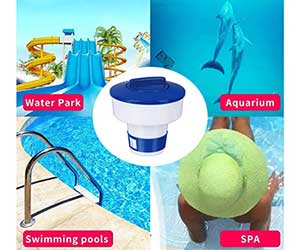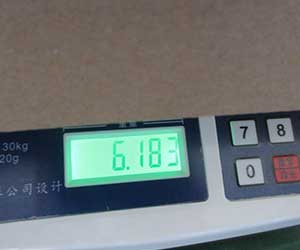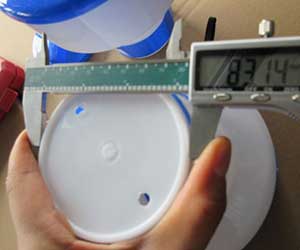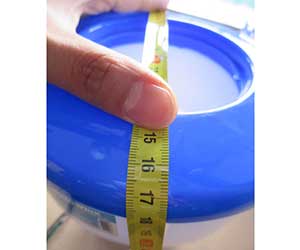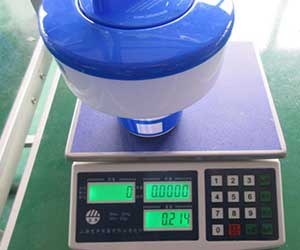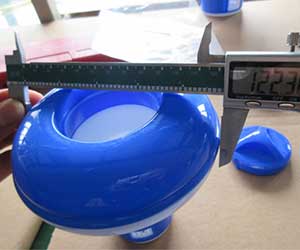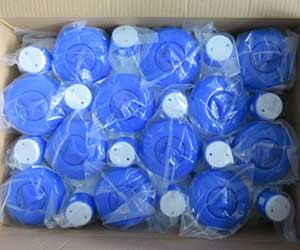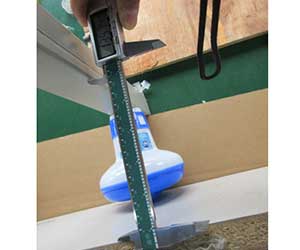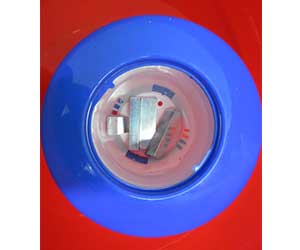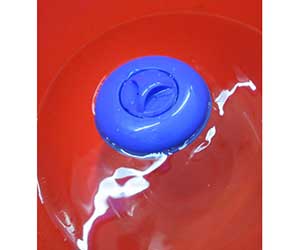You will never have to worry about chlorine levels in your pool or spa again! Floating chlorine dispensers with tabs deliver a steady flow of chlorine to your pool or spa. With an adjustable chlorine output vent, this dispenser works for in-ground pools, above-ground pools, and hotels.
Floating chlorine dispensers for pools is one of the most common ways to maintain pools because they’re easy to install, inexpensive, and help keep pools clean.
Specifications
Floating tablet chlorine dispenser
-Top diameter: 17CM
-Bottom diameter: 8CM
-Product height: 18CM
-Material: PP (anti-oxidation, corrosion)
-Color: White/Blue
-Chlorine is not included
Features
– Keeps your pool or spa clean and free of algae, bacteria, and foul odors.
-One dispenser fits many seasons—more excellent protection against the harsh UV light of the sun.
-Floating chemical dispenser for pool holds up to tablet, has a lockable cap and adjustable rings for complete control. Looks quick and easy.
-A perfect fit for tablets. Insert the tablets, lock the lid, and you are all set
Multiple vents on both sides of the dispenser work in complete harmony to provide total chlorine release control.
How to use a floating pool chlorinator?
A floating swimming pool chlorine dispenser, also known as a floating chlorine dispenser, ensures your swimming pool stays sanitized. Swimming pool chlorine floaters typically require a chlorine tablet versus the smaller variety for smaller spas. During the chlorination process, the tablet dissolves slowly without dispersing too much at once. Using floating pool dispensers in above-ground and in-ground pools is possible, but make sure your pool manufacturer says they are safe. When people are in the collection, chlorine floaters must remove.
1. The pH level of your pool should be between 7.2 and 7.6. You don’t want it to be so high that it burns your eyes or skin. Floating chlorine dispensers work well in this pH range.
2. Turn counterclockwise until the chlorine dispenser top unlocks. Remove the top from the dispenser’s bottom portion by lifting it. Remove the top lid and set it aside.
3. If your dispenser comes with a cup-shaped screen, use it to filter out small pieces of chlorine tablets. For the chlorinator to work correctly, there is no need for a filter. As the chlorine tablet dissolves and breaks apart, the screen helps.
4. Put one chlorine tablet in the dispenser. Refrain from mixing different types of sanitizing chemicals in the dispenser. Don’t throw loose chlorine tablets into the water to avoid chlorine saturation. They must use in a dispenser. To lock it in place, replace the lid and turn it clockwise. When it’s sealed properly, you’ll hear a click.
5. Turn the dispenser’s plastic collar counterclockwise. Plastic collars resemble dials. It is directly related to the width of the openings in the slats or grooves in the base collar. Please make sure the slats are half open by turning them halfway.
6. In the water, place the floating chlorinator. Submerge the unit completely underwater for several seconds, then allow it to bob back up. Underwater remains the bottom portion.
7. Through the hole in the lid, attach the optional leash or rope to the floater. A leash prevents the dispenser from floating to one end of the pool and settling there. The pressure-sensitive anchor plate includes in the leash. Most pool surfaces can be attached to the anchor plate. In the water, place the floating chlorinator.
8. Check the chlorine level in your pool every day for several days. Depending on how much chlorine you want to add to the water, the bottom collar may need to be adjusted. You can tether the dispenser to another area of the pool after two to four days or let it float around without one. Replace the chlorine tablet once it dissolves.
Is it safe to swim in the pool after putting chlorine tablets in it?
After adding water-balancing chemicals, you must wait at least 20 minutes to an hour. After adding calcium chloride to your pool, you should wait 2–4 hours (or one complete filter cycle) before swimming. After 24 hours or when your chlorine levels are around five ppm, you are safe to swim.
What happens if you get into a pool that has too much chlorine?
In pools, chlorine is a pesticide used to kill germs from feces, urine, saliva, and other substances. Health experts warn that excessive exposure to chlorine can cause rashes, coughing, nose or throat pain, eye irritation, and asthma attacks.
Is the swimming pool chemical dispenser any good?
Easy to use
Anyone can use these small chlorine floaters because they are so easy to use. You need to add chlorine tablets to the pool water, and you’re good to go.
Cheap
They are easier to obtain than automated chlorinators and much cheaper. It is easy to purchase a chemical dispenser.
Low maintenance
Using a chlorine dispenser has the advantage of being low maintenance. Once you have added chlorine tablets, you can get on with your day while the chlorinator works. If the dispenser chips or becomes unusable for whatever reason, acquiring another costs little.

